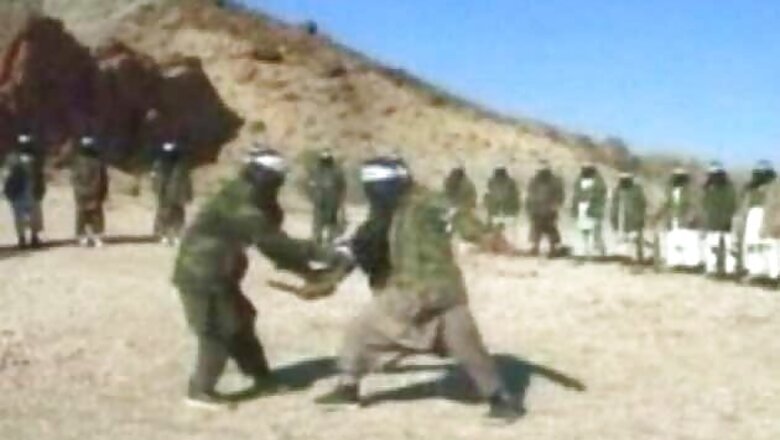
views
Washington: The revelation that militants sought to attack an airliner with an improved "underwear bomb" in a plot foiled by US and allied authorities shows their determination to build bombs that can pass through airport security, US officials said.
The Obama administration said on Monday that authorities in the Middle East recently seized an underwear bomb which they believe al Qaeda's Yemen-based affiliate had intended to give to a suicide bomber to blow up an airliner bound for the US or another Western country.
US officials told Reuters the device was seized within the last 10 days.
The plot was detected in its early stages, and no US airliner was ever at risk, officials said.
Yet the aborted plot shows that the Yemen-based group, al Qaeda in the Arabian Peninsula (AQAP), remains intent on attacking the United States or its allies, and is continuing to evolve its weapons and tactics.
One official said the latest underwear bomb to be discovered appeared to be similar to the work of fugitive Saudi militant Ibrahim Hassan al-Asiri, who US sources believe is a bomb-maker working with AQAP.
US officials said it had design features which were somewhat more sophisticated than a bomb used in two attempted attacks in 2009.
In the first incident, a man equipped with a bomb in his underwear tried to attack Prince Mohammed bin Nayef, a senior Saudi Arabian counter-terrorism official. The bomber killed himself in the attack but the prince survived.
On Christmas Day that year, a Nigerian-born militant who had spent time in Yemen, Umar Farouk Abdulmutallab, tried to detonate a bomb sewn into his underpants as his flight from the Netherlands to Detroit began its descent in US airspace. The device burst into flames but its explosive charge did not detonate. Abdulmutallab was subdued by fellow passengers and was later jailed by US authorities.
Improved bomb model
One official said the device seized in the latest investigation used what was supposed to be an improved or redesigned mechanism intended to ensure that the explosive charge detonated.
"While similar, a preliminary review of this device shows that it has some significant differences from the device used in the Christmas Day attack. It is clear that AQAP is revamping its bomb techniques to try to avoid the causes of the failure of the 2009 device," the official added.
Like the bombs used in the two previous attempted attacks, the latest device was non-metallic, officials said.
Senator Dianne Feinstein, chairman of the Senate intelligence committee, said: "I congratulate the CIA for thwarting this reported plot by AQAP to destroy a US-bound airliner using a specific type of bomb that is of new design and very difficult to detect by magnetometer."
US and European officials said that the newly-revealed plot was part of continued efforts by AQAP to design devices which could get through airport security.
A senior US official said the group might be eager to mount an attack following US operations that killed al Qaeda leader Osama bin Laden and AQAP's American-born chief Anwar al-Awlaki.
"AQAP is probably feeling pressure to conduct a successful attack to, from their perspective, avenge the deaths of bin Laden and Awlaki," a senior US official said.
Plot no threat to public
Caitlin Hayden, a spokeswoman for the National Security Council, said President Barack Obama had been informed of the plot in April and had been regularly updated about it.
"While the President was assured that the device did not pose a threat to the public, he directed the Department of Homeland Security and law enforcement and intelligence agencies to take whatever steps necessary to guard against this type of attack," Hayden said.
US officials declined to say where the underpants bomb was seized or by whom, but indicated it was either inside Yemen itself or a nearby country. Several officials stressed that the bomb never made it aboard an aircraft.
A senior US official said: "We disrupted this plot well before it was ever a threat to the United States."
"We believe AQAP produced the device, and we believe it was intended to be used by a suicide bomber on an aircraft," the official said, adding: AQAP remained "committed to striking targets in Yemen, Saudi Arabia, the Homeland, and Europe."
The FBI said in cooperation with security and intelligence partners overseas "an improvised explosive device (IED) designed to carry out a terrorist attack has been seized abroad. The FBI currently has possession of the IED and is conducting technical and forensics analysis on it."
It said initial investigation showed the bomb was similar to devices used by al Qaeda in the Arabian Peninsula (AQAP) in attempted attacks on planes and in assassinations attempts.
US officials said AQAP had also been working to design explosive devices which could be implanted in would-be suicide bombers and there were doctors willing to perform the necessary surgery.
They said implanted bombs were more likely that those built into clothing to defeat airport security though the impact may be weaker.




















Comments
0 comment